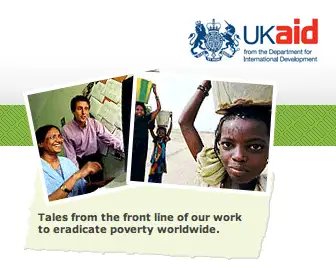Talking with the audience: Development organisations and social media
In addition to my recent Twitter analysis, I wrote another article on development organizations and social media on the web2fordev blog, which I crosspost also here.
Many organizations have approached the social web and new technologies from different angles during the last years. Large organisations have engaged in one or another way, in social media. But did they fully embrace the participatory web? Let’s take a look at how development organisations have approached the social web and where the status quo stands.
A general objective for development organisations is to increase their outreach. Social media are used to spread news and other information across the social web. Reaching an audience directly has many advantages, but are organisations ready to address the challenges inherent to a two-way communication interaction?
Video
Video channels are a popular form. All large development organizations have their own channels on Youtube: World Bank (2 236 subscribers), United Nations (6 608 subscribers), UNDP (1276 subscribers) USAID (43 subscribers) and CTA. While some organisations rely on the production of professional videos, USAID is still experimenting with a blend of professional and grassroots video productions. Like USAID, on its vimeo platform CTA offers both professional and in-house productions while on its official video site CTA offers a range of professionally produced multimedia related to agriculture and rural development.
Across the sites the number of subscribers confirms of the interest that people have in multimedia related to development cooperation. The download statistics of the World Bank, which exceed one million, support this assessment.
Another area of involvement are social network websites such as Twitter. Many organizations have Twitter accounts such as UNDP , UNICEF, UNHCR , UN , USAid, CIDA , AfDB , CTA, etc. The World Bank has various Twitter accounts such as news of an Asian section.
While videos are used to broadcast news, I wonder whether these organizations use Twitter to nurture two-way communication. A quick analysis indicates that this is not the case. Out of ten organizations, only two reacted to their audience and replied with a message.
Blogging
The blogging efforts from the World Bank and DFID are certainly different. The world bank has blogs covering different thematic areas such as conflict , governance or private sector development and these are linked to debates and interactions with the wider blogosphere. DFID has taken a different approach and provides “real life perspectives from those working on the ground to fight poverty”. It offers surfers to join the debate. DFID’s bloggers trigger quite some discussions on some posts, but also leave some questions unanswered. Other blogging efforts are being conducted by the United Nations and the Overseas Development Institute.
Another popular approach are the Fan pages on Facebook, which are mostly used as an alternative channel to broadcast organisational news (e.g. USAid) and create a space where fans can post questions and remarks. In the case of the World Bank, its page has 7758 members, with whom the organization is interacting quite actively. CTA has launched its Fan page on Facebook and accounts fora few hundred members so far.
Use of multiple social media
An more advanced approach is taken by some NGOs. A good example is Oxfam, which actively taps into the potential of the participatory web. Their blogging portal combines many different social media forms. Discussions are linked to different communities and Oxfam has built a far-reaching audience, with which it is engaged with.
Drawing the line
So, in conclusion, if one looks back at the time of the Web2forDev 2007 Conference , a lot has happened and some organisations have invested considerable resources to engage with social media. Nonetheless despite the promising signs for two-way conversations, it seems many organisations still have to define a well-though strategy and deploy the necessary resources to make the most out of the social web and its potentials.
In parallel some organisations are increasingly investing in integrating “social features” into existing internal web communication. This aspect will we be discussed in a forthcoming post.
